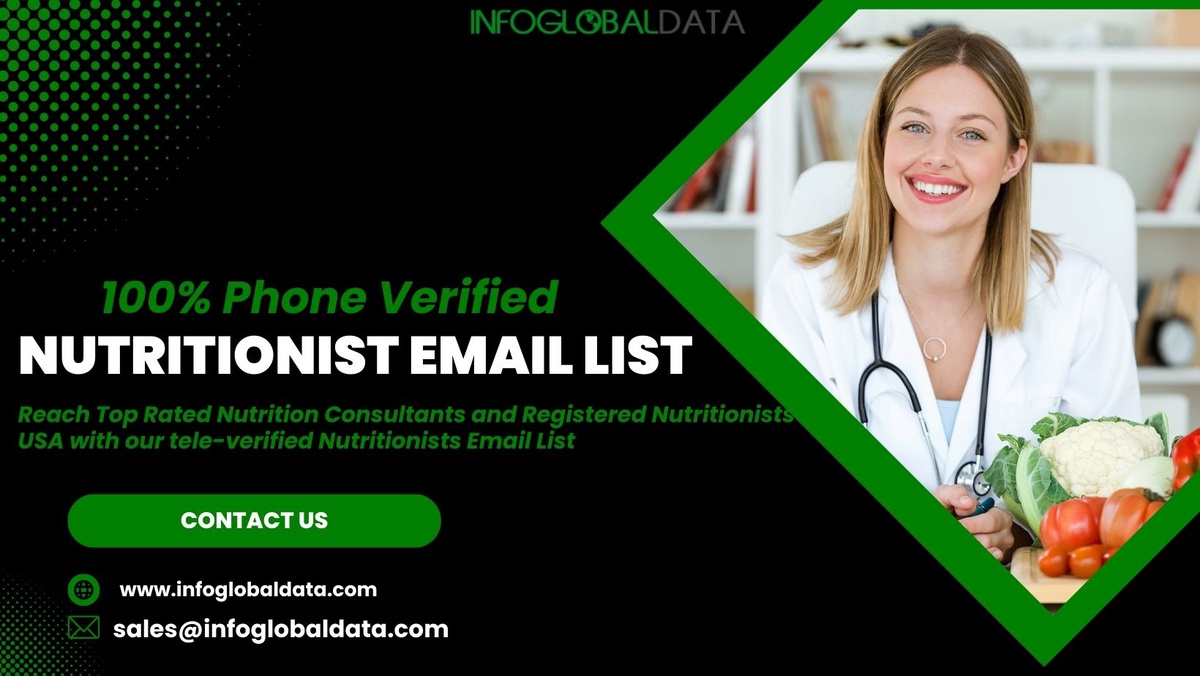Email marketing is a powerful tool for nutritionists to connect with their audience, build relationships, and promote their services. However, it's crucial to measure the return on investment (ROI) of your email list to ensure that your efforts are effective and yield desired results. In this article, we will explore the best practices for measuring the ROI of your nutritionist email list. From tracking key metrics to analyzing engagement, we'll provide you with actionable insights to optimize your email marketing strategy.
1. Introduction
As a nutritionist, building an email list allows you to stay connected with your clients, provide valuable information, and promote your services. However, to understand the effectiveness of your email marketing efforts, you need to measure the ROI of your nutritionist email list. This ensures that your resources and time are allocated efficiently to achieve maximum results.
2. Setting Clear Goals for Your Email Campaign
Before diving into measuring ROI, it's essential to define clear goals for your email campaigns. Are you looking to increase website traffic, generate leads, or drive sales? By establishing specific objectives, you can align your metrics and evaluation process accordingly.
3. Tracking Key Metrics
To measure the ROI of your nutritionist email list accurately, you need to track key metrics that indicate the performance of your campaigns.
· Open Rates
Open rates measure the percentage of recipients who open your emails. It indicates the effectiveness of your subject lines, sender reputation, and email deliverability. Aim for higher open rates by crafting compelling subject lines that entice your subscribers to click and open.
· Click-Through Rates
Click-through rates indicate the percentage of subscribers who click on the links within your emails. It measures the engagement and interest levels of your audience. To boost CTR, ensure your emails contain clear and compelling call-to-action (CTA) buttons or links that lead to valuable content on your website.
· Conversion Rates
Conversion rates are the ultimate measure of success for your email campaigns. They reflect the percentage of subscribers who take the desired action, such as making a purchase, signing up for a service, or requesting a consultation. Tracking conversion rates allows you to evaluate the effectiveness of your email content and optimize it for better results.
4. Analyzing Engagement
Engagement metrics provide valuable insights into how your subscribers interact with your emails. By analyzing engagement, you can identify areas for improvement and tailor your content to better resonate with your audience.
4.1 Analyzing Email Engagement Metrics
Engagement metrics include metrics like time spent reading emails, email sharing, and forwarding. These metrics help you understand how captivating your content is and whether it compels subscribers to take further action. Pay attention to metrics like average time spent reading and the number of shares to gauge the effectiveness of your email content.
· Segmenting Your Email List
Segmenting your email list allows you to personalize your content and target specific groups of subscribers. By analyzing engagement metrics across different segments, you can identify which segments are most responsive to your emails. This information helps you tailor your content and offers to improve engagement and conversion rates.
5. Monitoring Revenue Generation
To measure the ROI of your nutritionist email list effectively, it's crucial to monitor the revenue generated through your email campaigns.
· Assigning Revenue to Email Campaigns
By assigning revenue to your email campaigns, you can determine the monetary value generated by each campaign. This can be done by tracking the sales or leads generated directly from your emails. Use analytics tools to attribute revenue accurately and evaluate the impact of your campaigns on your overall revenue stream.
· Tracking Customer Lifetime Value (CLV)
Tracking the customer lifetime value (CLV) of subscribers acquired through email marketing provides insights into the long-term impact of your campaigns. By measuring the CLV, you can assess the value of each subscriber and make informed decisions regarding your email marketing strategy.
6. Evaluating Subscriber Growth and Churn Rate
Subscriber growth rate and churn rate are essential metrics to track the overall health and performance of your email list.
Evaluate the rate at which your email list is growing to understand the effectiveness of your lead generation strategies. Simultaneously, keep an eye on the churn rate, which reflects the percentage of subscribers who unsubscribe or become inactive over time. Identifying the reasons behind churn can help you optimize your email content, frequency, and relevance.
7. A/B Testing and Experimentation
A/B testing is a valuable technique for optimizing your email campaigns. By testing different elements such as subject lines, CTAs, content layouts, and sending times, you can identify the most effective combinations. Continuously experimenting and refining your approach based on the results will help you improve your ROI over time.
8. Integrating Email Metrics with Overall Marketing Strategy
To gain a holistic view of your marketing efforts, it's crucial to integrate email metrics with your overall marketing strategy. Align your email marketing goals, metrics, and insights with other channels such as social media, content marketing, and SEO. This integration allows you to measure the impact of your email campaigns in conjunction with other marketing initiatives.
9. Conclusion
Measuring the ROI of your nutritionist email list is vital for optimizing your email marketing strategy and achieving desired outcomes. By tracking key metrics, analyzing engagement, monitoring revenue generation, and evaluating subscriber growth, you can make data-driven decisions to improve your email campaigns. Remember to set clear goals, experiment with A/B testing, and integrate your email metrics with your overall marketing strategy for comprehensive insights and better results.


No comments yet